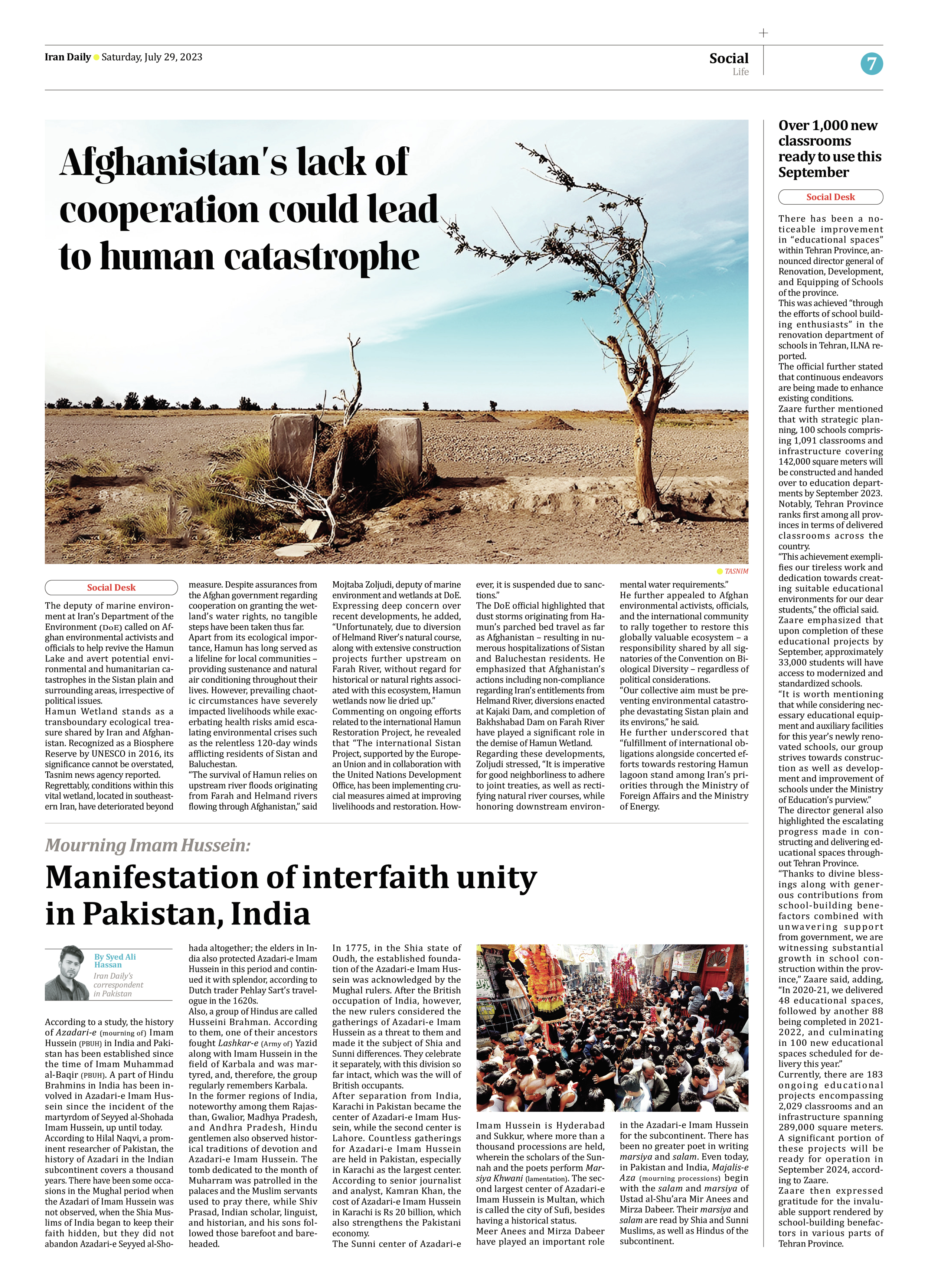
mourning Imam Hussein:
Manifestation of interfaith unity in Pakistan, India
By Syed Ali Hassan
Iran Daily’s correspondent in Pakistan
According to a study, the history of Azadari-e (mourning of) Imam Hussein (PBUH) in India and Pakistan has been established since the time of Imam Muhammad al-Baqir (PBUH). A part of Hindu Brahmins in India has been involved in Azadari-e Imam Hussein since the incident of the martyrdom of Seyyed al-Shohada Imam Hussein, up until today.
According to Hilal Naqvi, a prominent researcher of Pakistan, the history of Azadari in the Indian subcontinent covers a thousand years. There have been some occasions in the Mughal period when the Azadari of Imam Hussein was not observed, when the Shia Muslims of India began to keep their faith hidden, but they did not abandon Azadari-e Seyyed al-Shohada altogether; the elders in India also protected Azadari-e Imam Hussein in this period and continued it with splendor, according to Dutch trader Pehlay Sart’s travelogue in the 1620s.
Also, a group of Hindus are called Husseini Brahman. According to them, one of their ancestors fought Lashkar-e (Army of) Yazid along with Imam Hussein in the field of Karbala and was martyred, and, therefore, the group regularly remembers Karbala.
In the former regions of India, noteworthy among them Rajasthan, Gwalior, Madhya Pradesh, and Andhra Pradesh, Hindu gentlemen also observed historical traditions of devotion and Azadari-e Imam Hussein. The tomb dedicated to the month of Muharram was patrolled in the palaces and the Muslim servants used to pray there, while Shiv Prasad, Indian scholar, linguist, and historian, and his sons followed those barefoot and bareheaded.
In 1775, in the Shia state of Oudh, the established foundation of the Azadari-e Imam Hussein was acknowledged by the Mughal rulers. After the British occupation of India, however, the new rulers considered the gatherings of Azadari-e Imam Hussein as a threat to them and made it the subject of Shia and Sunni differences. They celebrate it separately, with this division so far intact, which was the will of British occupants.
After separation from India, Karachi in Pakistan became the center of Azadari-e Imam Hussein, while the second center is Lahore. Countless gatherings for Azadari-e Imam Hussein are held in Pakistan, especially in Karachi as the largest center. According to senior journalist and analyst, Kamran Khan, the cost of Azadari-e Imam Hussein in Karachi is Rs 20 billion, which also strengthens the Pakistani economy.
The Sunni center of Azadari-e Imam Hussein is Hyderabad and Sukkur, where more than a thousand processions are held, wherein the scholars of the Sunnah and the poets perform Marsiya Khwani (lamentation). The second largest center of Azadari-e Imam Hussein is Multan, which is called the city of Sufi, besides having a historical status.
Meer Anees and Mirza Dabeer have played an important role in the Azadari-e Imam Hussein for the subcontinent. There has been no greater poet in writing marsiya and salam. Even today, in Pakistan and India, Majalis-e Aza (mourning processions) begin with the salam and marsiya of Ustad al-Shu’ara Mir Anees and Mirza Dabeer. Their marsiya and salam are read by Shia and Sunni Muslims, as well as Hindus of the subcontinent.







